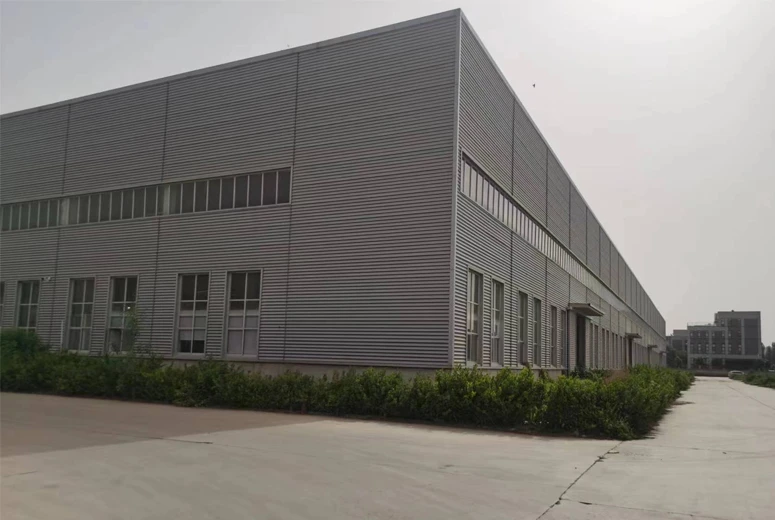hydraulic straightening press
Hydraulic Straightening Press Revolutionizing Metal Processing
In the realm of manufacturing, precision and efficiency are paramount, especially when dealing with metal fabrications. One key player in this industry is the hydraulic straightening press. This powerful machine has become an indispensable tool for achieving smooth, flat, and deformation-free metal components, catering to various sectors including automotive, aerospace, and construction.
Understanding the Hydraulic Straightening Press
A hydraulic straightening press operates on the principle of utilizing hydraulic force to rectify warped or bent metal pieces. The core components of this machine include a hydraulic cylinder, a control system, and a sturdy framework that supports the metal workpieces. The hydraulic system generates a force that can be precisely controlled, allowing operators to apply the exact pressure needed to straighten materials without causing further damage.
The design of a hydraulic straightening press is typically robust, able to withstand significant loads while maintaining accuracy. The pressing process involves placing the affected metal piece between two substantial plates. When the hydraulic cylinder is activated, it exerts pressure on the metal, effectively correcting bends or deformations. This process not only straightens the metal but also aligns it to strict tolerances, ensuring optimal performance in subsequent operations.
Applications in Various Industries
The versatility of hydraulic straightening presses makes them suitable for a wide range of industries. In the automotive sector, for instance, these presses are frequently used to straighten chassis components, frames, and body panels. The ability to restore these essential parts to their original specifications is crucial for safety and performance.
In the construction sector, flat steel plates and beams must often be straightened before they can be utilized in structural applications. Hydraulic straightening presses ensure these materials meet the necessary standards, reducing waste and improving overall project efficiency. Similarly, in the aerospace industry, where precision is critical, these machines play a vital role in maintaining the integrity of aircraft components.
Advantages Over Traditional Methods
hydraulic straightening press

One might wonder why hydraulic straightening presses have gained such popularity over traditional straightening methods, such as mechanical bending or manual hammering. The advantages are manifold. First and foremost, hydraulic systems offer incredible force in a compact design, enabling them to handle larger and heavier workpieces with ease.
Moreover, the ability to precisely control pressure means that operators can avoid over-straightening, which can lead to additional weaknesses or fractures in the material. This level of control is particularly important in industries where structural integrity is non-negotiable.
Additionally, hydraulic straightening presses enhance efficiency. The automation of the process reduces the time required for each operation, allowing for higher throughput in manufacturing environments. Coupled with modern computer controls, these machines can be programmed for various tasks, further streamlining the production process.
Innovations and Future Trends
As technology advances, the hydraulic straightening press continues to evolve. Innovations such as improved hydraulic systems, automated monitoring, and integration with digital manufacturing processes are paving the way for even greater efficiency and precision. Smart technologies that incorporate artificial intelligence and machine learning are anticipated to optimize the operation of these presses, predicting maintenance needs and enhancing productivity.
Moreover, as industries strive for sustainability, the hydraulic straightening press is poised to contribute positively. By enabling the reuse of metal components through effective straightening, it helps minimize waste, aligning with the growing focus on environmental responsibility in manufacturing.
Conclusion
The hydraulic straightening press is more than just a machine; it embodies a critical advancement in metal processing technology. With its ability to deliver precision, efficiency, and versatility across multiple industries, it plays a pivotal role in the modern manufacturing landscape. As innovations continue to emerge, the hydraulic straightening press will undoubtedly remain at the forefront, shaping the future of metal fabrication and ensuring that industries can meet their manufacturing demands with confidence and sustainability.
-
High Frequency Straight Seam Welded Pipe Production Line-BzZhou Xinghua Machinery Equipment Manufacturing Co., LTD.|line pipe steel&welded gas pipeNewsJul.30,2025
-
High Frequency Straight Seam Welded Pipe Production Line-BzZhou Xinghua Machinery Equipment Manufacturing Co., LTD.|High Precision&Automated SolutionsNewsJul.30,2025
-
High Frequency Straight Seam Welded Pipe Production Line - BzZhou Xinghua Machinery Equipment Manufacturing Co., Ltd.NewsJul.30,2025
-
High Frequency Straight Seam Welded Pipe Production Line-BzZhou Xinghua Machinery Equipment Manufacturing Co., LTD.|Precision Welding, High EfficiencyNewsJul.30,2025
-
High Frequency Straight Seam Welded Pipe Production Line|BzZhou Xinghua|Precision Welding&EfficiencyNewsJul.30,2025
-
High Frequency Straight Seam Welded Pipe Production Line - BzZhou Xinghua|Precision Engineering&EfficiencyNewsJul.30,2025


